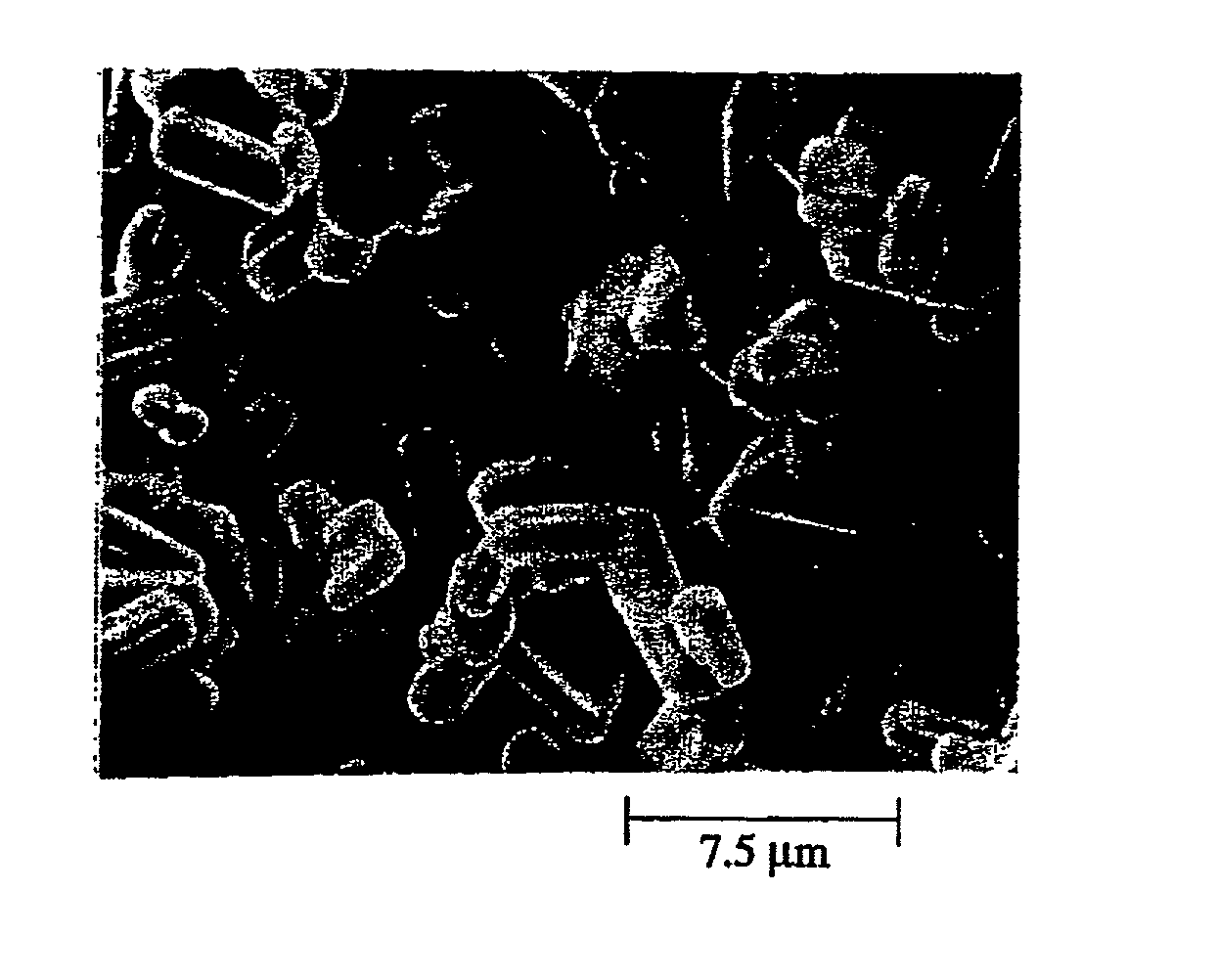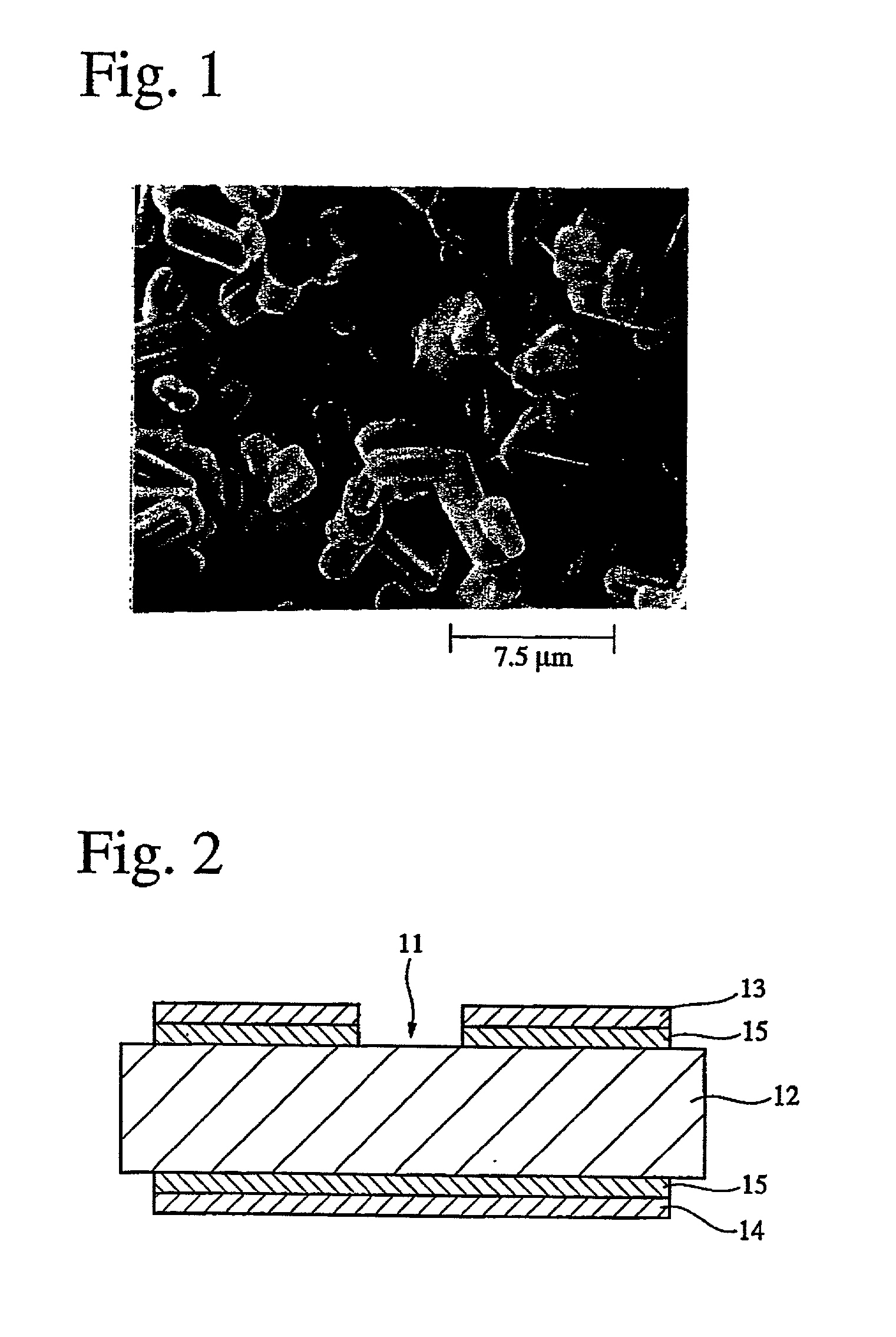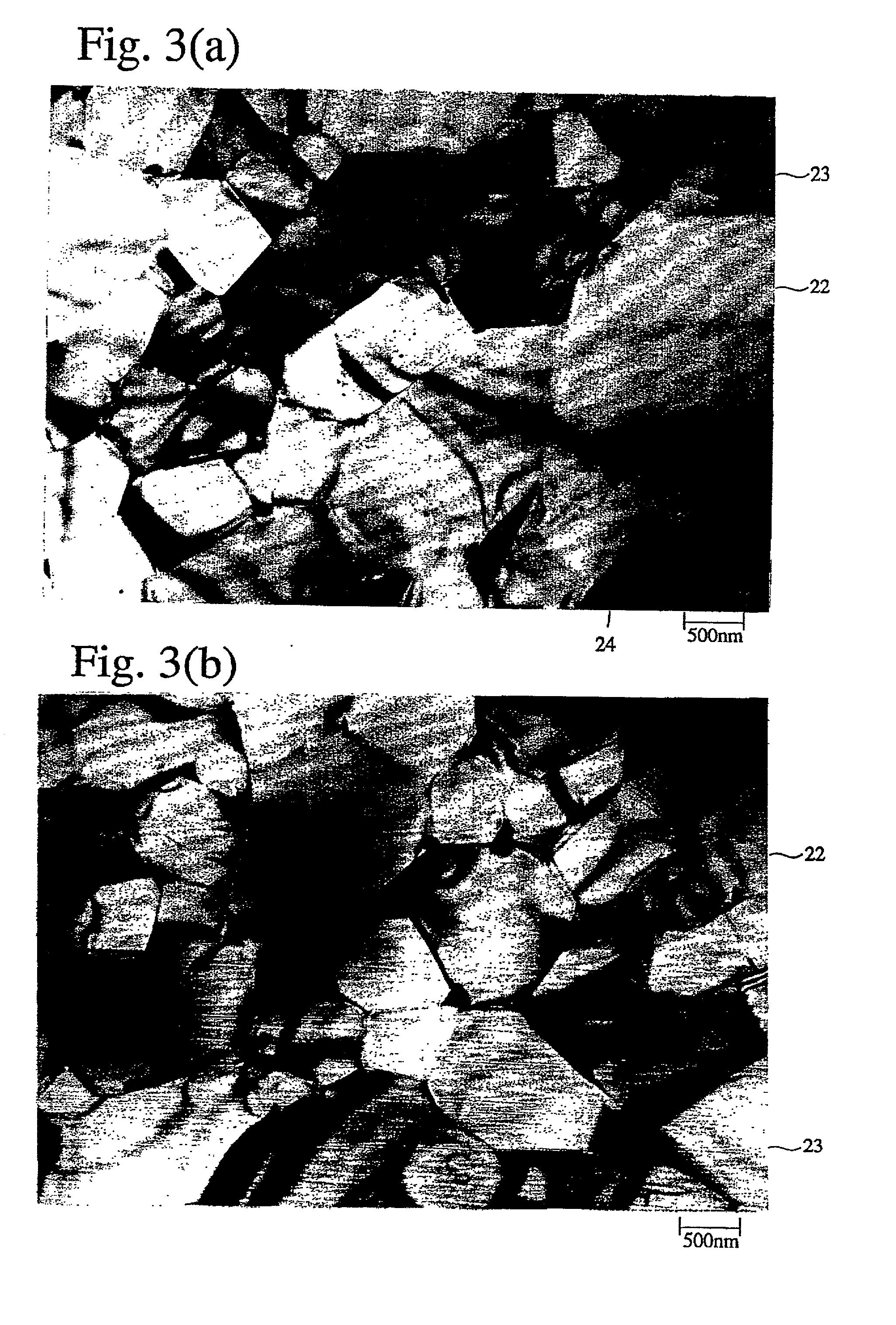Silicon nitride powder, silicon nitride sintered body, sintered silicon nitride substrate, and circuit board and thermoelectric module comprising such sintered silicon nitride substrate
a technology of silicon nitride and silicon nitride, which is applied in the field of silicon nitride powder, silicon nitride sintered body, circuit board and thermoelectric module comprising such sintered silicon nitride substrate, can solve the problems of mechanical strength, substrate unit cracking, and decrease in mounting reliability, and achieve excellent mechanical strength and high thermal conductivity
- Summary
- Abstract
- Description
- Claims
- Application Information
AI Technical Summary
Benefits of technology
Problems solved by technology
Method used
Image
Examples
example 2
[0122] Added to 10 weight % of the first silicon nitride powder having a .beta.-particle ratio of 30% or more, which was produced in the same manner as in EXAMPLE 1, and 86 weight % of .alpha.-silicon nitride powder were 3 weight % of MgO and 1 weight % of Y.sub.2O.sub.3 as sintering aids to form a mixed powder. The resultant mixed powder was charged into a resin ball-milling pot filled with a solution of a 2-weight-% amine dispersant in toluene / butanol together with silicon nitride balls as a pulverization medium, and mixed for 48 hours. 15 parts by weight of a polyvinyl-type, organic binder and 5 parts by weight of a plasticizer (dimethyl phthalate) were added to 100 parts by weight of the mixed powder in the pot and mixed for 48 hours to form a slurry. This slurry was cast to a green sheet by a doctor blade method. By heating the resultant green sheet at 400-600.degree. C. for 2-5 hours in the air, the organic binder was removed.
[0123] The degreased green body was sintered at 1,8...
example 3
[0127] Added to 10 weight % of the first silicon nitride powder having a .beta.-particle ratio of 30% or more, which was produced in the same manner as in EXAMPLE 1, and 86 weight % of .alpha.-silicon nitride powder were 1 weight % of MgO and 3 weight % of Gd.sub.2O.sub.3 as sintering aids to form a mixed powder. The mixed powder was charged into a ball-milling pot filled with ethanol containing 2 weight % of a dispersant (Leogard GP), and mixed. The resultant mixture was vacuum-dried and granulated through a 150-.mu.m-opening sieve. It was then CIP-molded at a pressure of 3 tons by a press apparatus to form disc-shaped green bodies of 20 mm in diameter and 10 mm in thickness and those of 100 mm in diameter and 15 mm in thickness. Each of the resultant green bodies was sintered at a temperature of 1,850.degree. C.-1,950.degree. C. and a pressure of 0.7-0.9 MPa (7 atm-9 atm) for 5-40 hours in a nitrogen gas atmosphere. The production conditions of the first silicon nitride powder are...
example 4
[0136] Added to 10 weight % of the first silicon nitride powder having a .beta.-particle ratio of 30% or more, which was produced in the same manner as in EXAMPLE 1, and 86 weight % of .alpha.-silicon nitride powder were 3 weight % of MgO and 1 weight % of Y.sub.2O.sub.3 as sintering aids, to form a mixed powder. The mixed powder was charged into a resin ball-milling pot filled with a solution of a 2-weight-% amine dispersant in toluene / butanol together with silicon nitride balls as a pulverization medium, and mixed for 48 hours. 12.5 parts by weight of an organic binder and 4.2 parts by weight of a plasticizer (dimethyl phthalate) were added to 83.3 parts by weight of the mixed powder in the pot, and mixed for 48 hours to form a slurry. This slurry was cast to green sheets by a doctor blade method.
[0137] Each green sheet was heated at 400-600.degree. C. for 2-5 hours in the air to remove the organic binder, and the degreased green sheet was sintered at 1,850.degree. C. and 0.9 MPa ...
PUM
| Property | Measurement | Unit |
|---|---|---|
| particle size | aaaaa | aaaaa |
| temperature | aaaaa | aaaaa |
| specific surface area | aaaaa | aaaaa |
Abstract
Description
Claims
Application Information
 Login to View More
Login to View More - R&D
- Intellectual Property
- Life Sciences
- Materials
- Tech Scout
- Unparalleled Data Quality
- Higher Quality Content
- 60% Fewer Hallucinations
Browse by: Latest US Patents, China's latest patents, Technical Efficacy Thesaurus, Application Domain, Technology Topic, Popular Technical Reports.
© 2025 PatSnap. All rights reserved.Legal|Privacy policy|Modern Slavery Act Transparency Statement|Sitemap|About US| Contact US: help@patsnap.com



